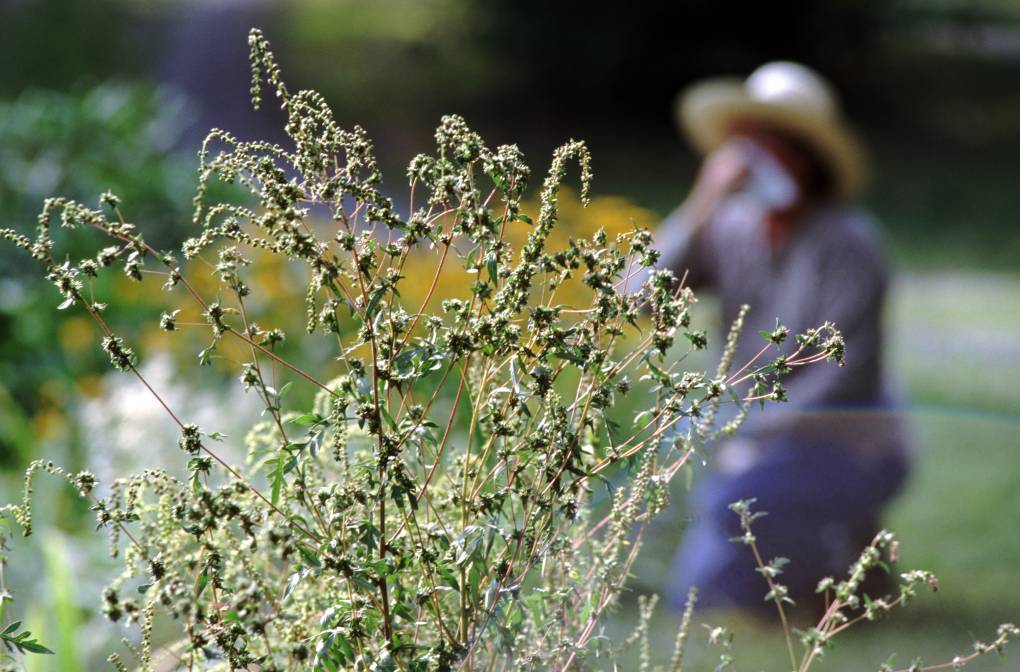Show Highlights
Climate Change and Worsening Allergies
Dr. Sindher notes that allergy sufferers today are experiencing markedly worse symptoms. “It definitely feels more severe—stronger reactions, more people affected,” she says. A 2022 study in Frontiers in Allergy directly links this spike in oak and ragweed pollen to rising temperatures and elevated CO₂ levels.
Dr. Garcia-Laurette agrees that allergies have climbed steadily over the past four decades. “There’s no doubt respiratory and food allergies are on the rise,” she says. Climate change lengthens flowering and pollen seasons, and the evidence is clear.
Allergy Symptoms and Distinguishing from Colds
Dr. Garcia-Laurette points out that you can often tell allergies from a cold by when they occur and how you respond to treatment: allergies typically don’t cause true fevers, may only bring on mild aches, and will improve with antihistamines—whereas colds, especially during flu season, often include real fevers and won’t get better with standard allergy meds.
Dr. Sindher recommends tracking your personal triggers and local pollen counts so you can begin your allergy treatment regimen before symptoms reach their worst.
Understanding the Allergic Response
Dr. Sindher describes how an allergic reaction unfolds. Our bodies produce allergen-specific Immunoglobulin E (IgE) antibodies that bind to mast cells. When pollen—or another trigger—crosses our path, it attaches to those antibodies on the mast cells, which then release preformed mediators like histamine and tryptase, sparking the inflammation we recognize as allergy symptoms.
Dr. Garcia-Laurette says that IgE is the central “bad actor” in allergic responses. She explains that the biologic drug omalizumab works by preventing IgE from binding to mast cells, thereby blocking the cascade that leads to histamine release and allergic inflammation.
Treatment Options: Medications and Strategies
Dr. Sindher emphasizes readily available medications and simple adjuncts for symptom relief: over-the-counter antihistamines like loratadine (Claritin), cetirizine (Zyrtec), and fexofenadine (Allegra) form the backbone of treatment, and can be paired with saline rinses or a neti pot. She also recommends low-dose steroid nasal sprays to reduce the inflammation and swelling in the nasal passages.
When it comes to children, Dr. Garcia-Laurette advises striking the right balance: use enough medication to keep symptoms controlled but avoid over-medicating, with the aim of preventing more serious, life-disrupting complications down the line.
On the prevention front, Dr. Sindher suggests minimizing exposure whenever possible. If you need to be outside during high-pollen days, consider wearing an N95 or KN95 mask; at home, keep windows shut, run air purifiers, and ensure your air-conditioning filters are regularly changed to reduce indoor allergen levels.
Emerging Treatments and Research
Dr. Garcia-Laurette highlights a new class of “biologic” therapies—large, engineered antibodies that selectively target specific drivers of the allergic cascade. One example, dupilumab, interrupts key signaling pathways responsible for IgE production, effectively cutting off the supply of the antibody that fuels allergic reactions.
Dr. Sindher adds that omalizumab, originally approved for asthma and now for food allergies, works by binding circulating IgE and clearing it from the bloodstream. By removing those allergen-specific IgE antibodies before they ever encounter mast cells, the treatment prevents the downstream release of histamine and other inflammatory mediators.
Despite their promise, both doctors caution that the high cost of these biologics means they’re typically reserved for patients with the most severe, treatment-resistant allergies.
This content was edited by the Forum production team but was generated with the help of AI.
link

